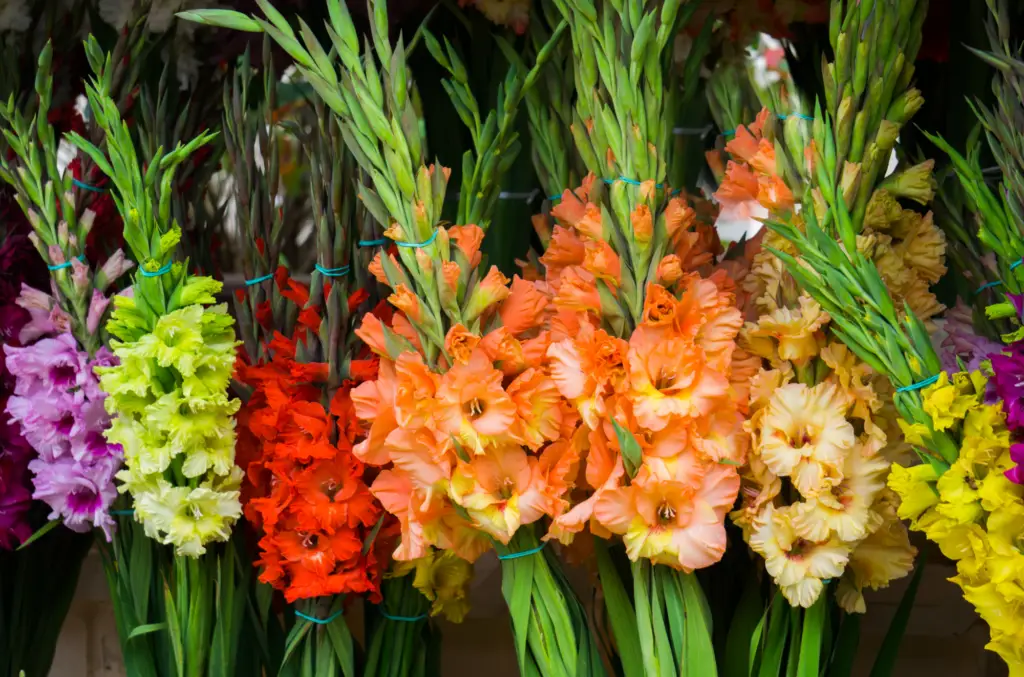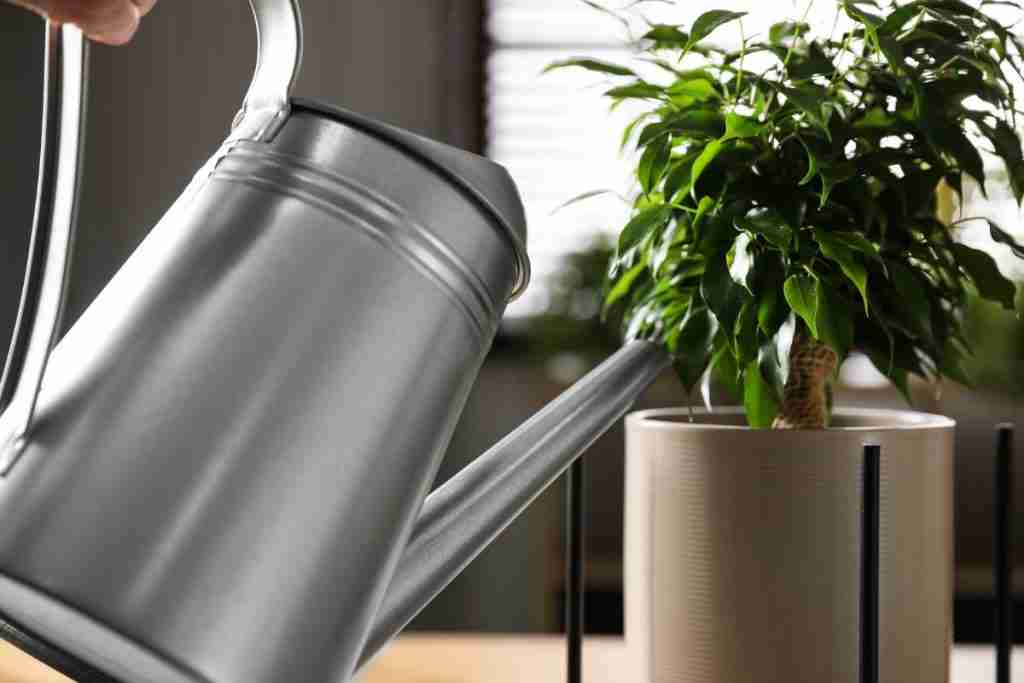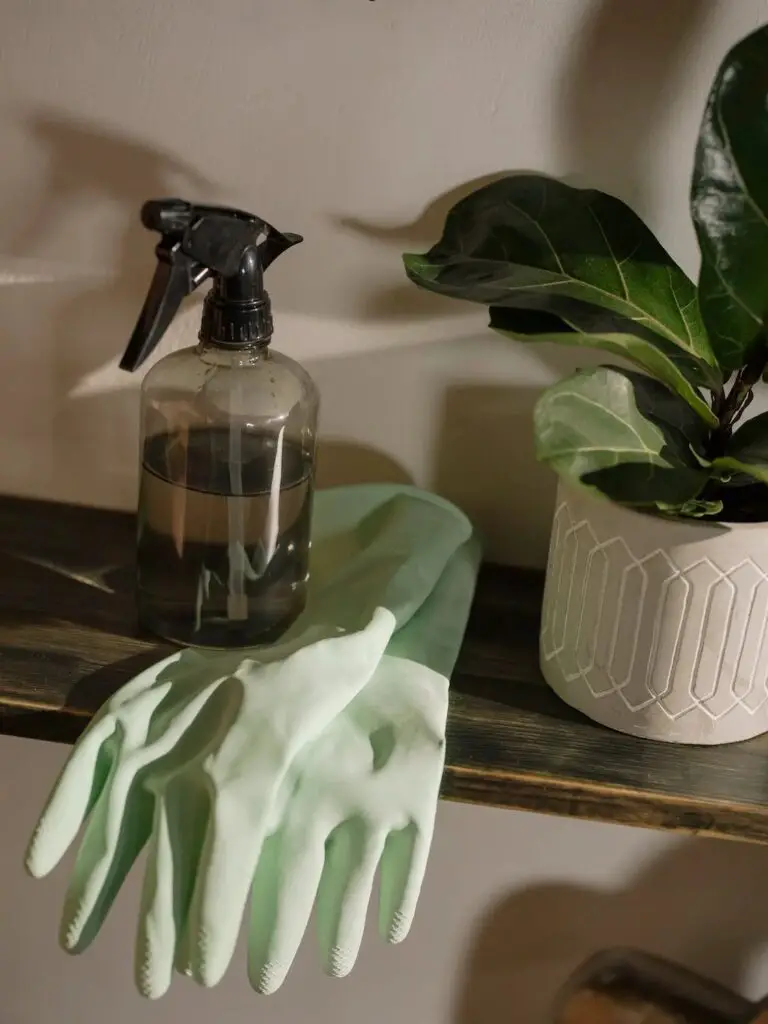Gladioli, also known as gladiolus or sword lilies, are stunning flowering plants that add a touch of elegance and beauty to any indoor space. Originating from South Africa, gladioli have become popular as both outdoor and indoor plants due to their vibrant colours and striking flower spikes. If you want to enjoy these magnificent flowers indoors and ensure they thrive as houseplants, this comprehensive guide will provide you with all the essential information on caring for gladioli.

Table of Contents
Understanding Gladioli
Before diving into the specifics of gladioli care, it’s crucial to understand the plant itself. Gladioli belong to the genus Gladiolus, and they are part of the Iridaceae family. These plants are characterised by their long, sword-shaped leaves and tall flower spikes that can reach heights of up to 5 feet or more. The flowers come in a wide range of colors, including red, pink, yellow, orange, white, and even bi-colored varieties.
As houseplants, gladioli are typically grown from corms, which are similar to bulbs but flatter and have no protective outer layer. Corms serve as the storage organs for nutrients, allowing the plant to survive during periods of dormancy.
Selecting the Right Gladioli Corms
Choosing healthy and viable gladioli corms is the first step in successful houseplant cultivation. When purchasing corms, look for ones that are firm, plump, and free from any signs of decay, mold, or damage. Avoid corms that feel soft, spongy, or dried out, as these are likely to be unhealthy or past their prime.
Planting Gladioli Corms
Gladioli are typically planted in the spring for summer and fall (autumn) blooms. To get started, follow these steps:
- Select a Suitable Container: Choose a pot that is at least 12 inches (30 centimetres) deep to accommodate the long roots and allow for good drainage. Ensure the pot has drainage holes to prevent waterlogging, which can lead to root rot.
- Prepare the Soil: Use a well-draining potting mix enriched with organic matter. A mix of peat moss, perlite, and compost works well for gladioli. Avoid heavy soils that can lead to waterlogged roots.
- Planting Depth: Plant the corms about 4 to 6 inches (10 to 15 centimetres) deep with the pointed end facing upwards. Space multiple corms at least 4 to 6 inches (10 to 15 centimetres) apart to allow for adequate air circulation.
- Watering: Water the newly planted corms thoroughly and keep the soil consistently moist during the growing season. Be cautious not to overwater, as this can cause the corms to rot.
- Light and Temperature: Gladioli thrive in bright, indirect light. Place the pot in a location that receives at least 6 to 8 hours of sunlight daily. The ideal temperature range for gladioli is between 65°F to 75°F (18°C to 24°C).
- Support Stakes: As gladioli grow, they can become top-heavy due to their tall flower spikes. Insert support stakes when the plants are about 12 inches (30 centimetres) tall to prevent them from bending or breaking.
Watering and Humidity
Proper watering is essential for the health of gladioli as houseplants. During the active growing season, keep the soil consistently moist but not waterlogged. Overwatering can lead to root rot, while underwatering can cause the flowers to wither prematurely.
To determine if it’s time to water, insert your finger about an inch or centimetre into the soil. If it feels dry, it’s time to water. Use room temperature water and water the soil directly, avoiding the flowers and foliage.
Maintaining moderate humidity levels can also benefit gladioli, especially during the dry winter months when indoor air tends to be drier. You can increase humidity by using a humidifier or placing a shallow tray filled with water and pebbles near the plant. As the water evaporates, it creates a more humid microenvironment.


Fertilising Gladioli
Feeding gladioli with the right nutrients is crucial for promoting healthy growth and vibrant blooms. During the active growing season, fertilise the plants every two to three weeks using a balanced liquid fertiliser diluted to half strength. This will provide the necessary nutrients without risking fertiliser burn. Once the flowers have bloomed and started to fade, you can stop fertilising, as the plant will enter a dormant phase.
Deadheading and Pruning
To encourage continuous blooming and maintain the plant’s appearance, it’s essential to deadhead spent flowers regularly. As the individual flowers on the flower spike start to fade, use clean and sharp scissors or pruners to remove them just above the base of the spike. This will prevent the plant from putting energy into seed production and instead channel it into creating new flowers.
Additionally, once the entire flower spike has finished blooming and starts to wither, you can cut it back to the base of the plant. Removing spent flower spikes will not only improve the plant’s appearance but also reduce the risk of disease and pests.
Managing Pests and Diseases
Like any plant, gladioli are susceptible to pests and diseases. Common pests that may affect gladioli include aphids, thrips, and spider mites. Regularly inspect the plant’s leaves, stems, and flowers for any signs of infestation. If you spot pests, treat them promptly with neem oil or insecticidal soap.
As for diseases, gladioli can be prone to fungal issues such as botrytis (gray mold) and fusarium wilt. To prevent these problems, ensure proper air circulation around the plant, avoid overwatering, and keep the leaves dry by watering at the soil level.


Dormancy and Storage
After the blooming season is over, gladioli will naturally enter a period of dormancy. During this time, the leaves will start to turn yellow and wither. This is entirely normal and indicates that the plant is preparing for its dormant phase.
To help the corms store energy for the next growing season, reduce watering gradually as the leaves yellow. Once the foliage has completely withered, you can carefully dig up the corms. Clean off any excess soil, and remove any dead or damaged corms. Store the healthy corms in a cool, dry, and well-ventilated area until the next planting season.
Propagation
Gladioli can be propagated through their corms. When digging up the corms for storage, you may notice small cormels or baby corms attached to the main corm. These cormels can be separated from the parent corm and planted individually to grow new gladioli plants.
Conclusion
Caring for gladioli as houseplants can be a rewarding and enjoyable experience. With the right conditions, proper watering, sufficient light, and regular maintenance, these magnificent flowers will brighten up your home with their vibrant colours and impressive flower spikes. Remember to provide the necessary support, deadhead spent flowers, and manage pests and diseases when necessary. By following these guidelines, you can successfully grow gladioli indoors and witness their beauty year after year. Happy gardening!
